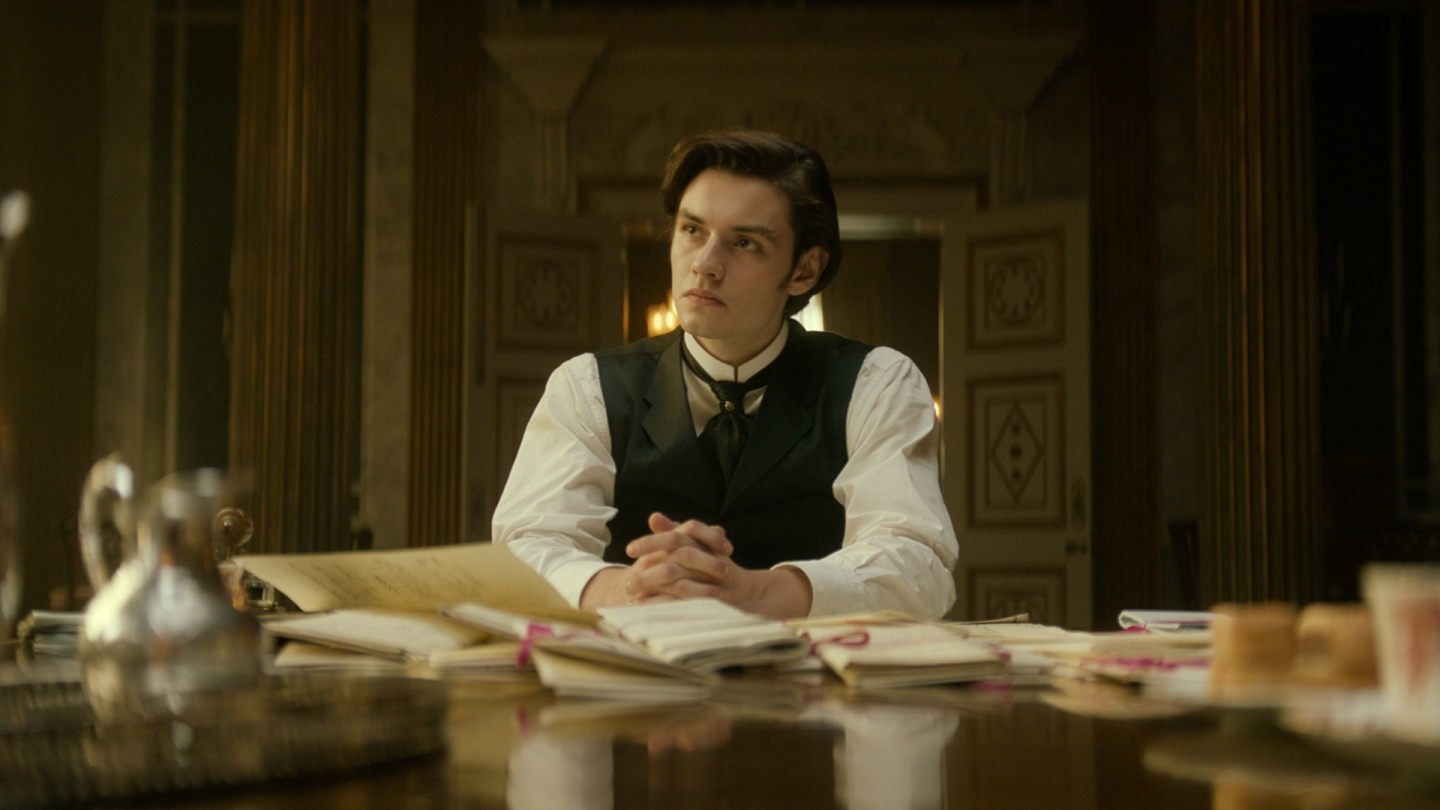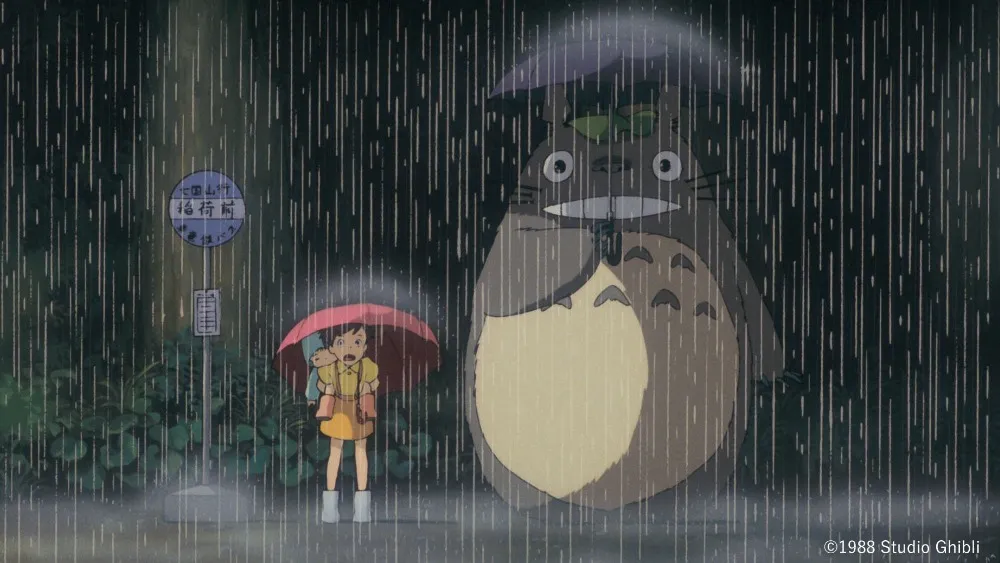Copyright The Hollywood Reporter

Nestled among the tourist-heavy streets of Soho in the heart of London — far from the bright city lights and cacophonous traffic — is a man in a dark, quiet room. His name is Adam Glasman, a senior colorist at Goldcrest Films, a company renowned for its post-production facilities in the British capital. Glasman is demonstrating to The Hollywood Reporter his masterful command of the elaborate computer system set up in front of him. Hundreds of controls — faders, toggles, wheels — speckle his desk, attention focused on the two large screens above while his hands work away. There’s something DJ-esque about the scene. And it’s all muscle memory for Glasman, a prolific Hollywood colorist who has worked on hundreds of films. He’s pulling up footage from Netflix’s Dublin-set House of Guinness, one of his more recent pieces of work. “[Cinematographer] Nicolaj Brüel wanted to slightly separate the worlds within the show,” Glasman explains, the sky outside the Guinness factory turning a dramatic, rich sepia with a single click. “You’ve got the Guinness family — the rich, lush [world], a lot of indoor stuff, it’s candlelit, there’s lamps — and then he wanted something a bit grittier for the world of the people that work in the factory and the Fenians. So we created this slightly sulfurous yellow-green for that world.” This is the hidden art of color grading: a craft widely under-appreciated outside of its own industry, yet impacts us, the audience, as any soundtrack, costume design or dialogue would. Colorists manipulate the color of a film, TV show or music video to create a specific mood, visual style or narrative theme, and have been doing this job as long as any other creative on set.” The colorist is the DP’s strongest ally,” begins Daphné Polski, a FilmLight Colour Awards producer. “Color grading shapes the emotion of a film — through subtle shifts in hue, contrast and saturation, it can make a scene feel warm or distant, hopeful or bleak. It’s about guiding how the audience feels in every moment, reinforcing the narrative and deepening the emotional journey.” For over 20 years, FilmLight has been dedicating its work to providing high-end professional color grading and pipeline solutions for the film, television, and post-production industries for clients ranging from major studios like Warner Bros, to boutique post houses around the world. Headquartered in London, the company is committed to bringing the art and craft of color into the spotlight, and testament to this goal, the FilmLight Colour Awards were launched in 2021. “What we are trying to highlight is that there is a beautiful and hidden artform that enhances the cinematic experience,” FilmLight co-director Jacqueline Loran tells THR. Glasman is one of a handful of colorists to have picked up a FilmLight Colour Awards nomination this year for his work on Robert Eggers’ stunningly gothic Nosferatu. The shortlists — announced in October — celebrate the best of the industry’s color grading professionals and is now in its fifth year. “It’s a bit frustrating to see how they are not recognized as much as they should be,” says Polski. “We wanted to give colorists the recognition they truly deserve — not only among their peers, but across the wider creative industry. And that’s why we started the color awards.” Colorists, also referred to as color graders, are not given their own categories at awards shows or even on IMDb (where they’re simply listed under VFX or editorial teams), despite their enormous contribution to a film’s success. Take Yorgos Lanthimos’ Oscar-winning Poor Things, graded by colorist Greg Fisher at Company 3 in London: “The film starts in black and white and the goes into color following the evolution of the main character, and at the end it gets crazy saturated and very excessive,” says Polski. “This is a great example of how colorgrading serves a narrative.” Cinematographer Robbie Ryan picked up an Academy Award nomination for his work, though Fisher went unrewarded — not counting his FilmLight win. That isn’t to say DPs don’t appreciate the craft. It’s quite the opposite: most cinematographers will have a trusty colorist they pair up with on every project. “We establish a shorthand during a project,” says Australian cinematographer Mandy Walker, president of the American Society of Cinematographers (ASC) and an Oscar nominee for her work on Baz Luhrmann’s lavish and vibrant Elvis (2022). “Working with a colorist early on is really important.” Walker explains. “The DP and colorist will set ‘LUTS’ — “look up tables” — for the movie in conversation with the director. [These] determine various colors, gradients, palettes and tones for different scenes or parts of the story, and can run on all the on-set monitors during the shoot or be used for editorial in post.” “On Elvis,” she continues, “we decided to have a different look for each of the three time periods we were shooting. I went into the color timing suite with Baz and worked with the colorist in pre-production to set a separate LUT for each of the time periods — that LUT would be used on set to inform how the art direction looked, how the costumes look, how the makeup looked, plus the lighting design… For the early part of [Elvis Presley’s] life, it was a little desaturated with only some colors — reds and greens and blues — more present than others. They were reminiscent of certain documentary photography of the time.” Walker, last year’s FilmLight Colour Awards jury president, describes a colorist’s job as “very magical.” They can isolate certain parts of a frame, draw the viewer’s eyes to a character’s face by making it brighter, darker, softer, higher contrast or a different tone. “I do a very basic color and density pass of the film to match everything up. And following that is the next pass when they can really do their magic,” she adds. “When you say, ‘Oh I don’t really like the green trees there in the background,’ a colorist can say, ‘Well I’m going to change the hue of the green so it’s a color you like better.’” It can take weeks, even months, to get through a film or show frame by frame. “I love working with colorists,” says Walker. “It is bringing in an expert to enhance what you’ve done.” “Cinematography is really all about storytelling,” she adds, “and the best colorists are really good storytellers. They understand the visual language of a movie and how it affects an audience, how to focus your eye somewhere… Cinematographers rely on them a lot to have a good eye plus a good sense of their tools to help tell the story.” Of course, it is a technical feat too — colorists are asked to work across different film stocks, make the final product balanced, consistent, and keep up to speed with rapidly-changing technology in an increasingly digital industry. Peter Doyle, a colorist at Picture Shop with a second-to-none portfolio including The Matrix, The Lord of the Rings trilogy, Warner Bros’ Harry Potter films and various Tim Burton movies, remembers when visual effects teams were starting to catch on to the possibilities of color in a digital environment. “The Wachowskis wanted to create a particular look for a sequence [in The Matrix] that wasn’t doable with analog, with chemical processes,” Doyle explains to THR. “So we used a digital process to do that, and then it became an interesting proposition to try and do that for entire films. Based on that, Peter Jackson and Andrew Lesnie, the DP for The Lord of the Rings… we had a talk and they said, ‘Why don’t we go for it and try to do it with [The Fellowship of the Ring]? It kind of went from there.” That was about 25 years ago. “And I’d say [it was] the first major grade that I did,” he adds. When asked about the more recent changes in the color grading industry, Doyle says an entirely new market is muddying the waters. “Color grading really serves three markets [now] — the theatrical market, cinema as we know it, and then what we now call streaming — it used to be broadcast — and then there’s a third, the more web-based, it’s very amorphous.” He says colorists are finding themselves adapting to smaller screens, even YouTube, as more and more audiences seek out their content online. And yet, he also explains, there is an appetite to return to the retro, analog-based craft; nostalgia-driven resurgence for a dirtier, grainer look. “[But] it’s become a lost craft.” Color trends will also differ entirely depending on the country and culture, according to the FilmLight team. “For example, the look of an American movie will typically differ quite dramatic to the look of a Bollywood movie,” which might appear much more saturated. It’s this attention to cultural detail that colorists will factor in to the task at hand. Some directors are famed for their color palettes: think Wes Anderson and his iconic, distinctive pastels. In recent years, the relationship between directors and their colorists (in Anderson’s case, with Gareth Spensley) are getting stronger, notes Doyle. But colorists still aren’t cracking awards recognition like makeup, costume, hair and other crafts are. Says Polksi: “Some major projects can take up to three months in grading. I don’t think people realize how much work goes into it.” “It’s a job that mostly happens after the film is finished, in the background, and it doesn’t happen in front of 100 people on set,” adds Walker. “I think that there’s probably not enough people who understand what they do and what they bring to a film, which is really important.” As a cinematographer, she continues, “I want people to feel the emotions of what’s going on with the characters, to feel the atmosphere, the locations and what the characters are experiencing. And I feel like really great colorists are only making that better.” The FilmLight Colour Awards are hoping to platform the craft on a global stage. Among the 2025 nominees are Kostas Theodosiou for his work on Ryan Coogler’s stylishly effervescent Sinners, Tom Poole for the clinical and slick palette on season two of Severance and Damien Vandercruyssen, who’s behind the gorgeous old Hollywood look on The Studio. The awards also recognize color work done on music videos, and have spotlighted emerging talent categories dedicated to lower-budget content and up-and-coming colorists. Cinematographer Bradford Young, best known for his work on Solo: A Star Wars Story (2018), Arrival (2016) and Selma (2014), is heading up the jury, and South Korean auteur Park Chan-wook is the guest of honor. The 2025 FilmLight Colour Awards ceremony will be held on Nov. 16 at EnergaCAMERIMAGE in Poland. Elsewhere? “I think it’ll be a while yet,” says Doyle, who deems HBO’s Euphoria a perfect example of award-worthy color work over the last few years. “At least with the Emmys, you’re starting to see, sometimes, that the colorist will be part of the [visual effects] team. Whether we see dedicated colorist awards in the future, I’m not sure… FilmLight’s effort will hopefully achieve, on a selfish level, more of an understanding of that process, and then the audience will come to expect more when they go to a cinema.” Glasman concurs: “The role of the colorist isn’t sufficiently recognized in terms of awards, and to me, this highlights a lack of understanding of the role aside from direct collaborators — typically cinematographers, but also directors and the editorial team,” he tells THR. “I really feel like the FilmLight awards are helping to raise our profile.” The Brit is due downstairs to work in front of a theater-sized screen on a hotly anticipated feature from a renowned filmmaker. It’s one of many he’s currently working on, with a slate so full he’s forced to turn some heavyweight directors and producers down. This is the world of a Hollywood colorist: always there, out of the spotlight.



